The world of aviation is littered with a number of dreams that rarely become reality. One such intriguing concept was the Tupolev Tu-404, a behemoth of a commercial aircraft proposed by the Russian aerospace company Tupolev in the early 1990s.
Tuplev Tu-404 is the largest aircraft ever designed in the history of aviation. It wasn’t your average jumbo jet; it was a radical design with the potential to carry a whopping 1,214 passengers in a single-class configuration across vast distances of up to 13,500 Km.
This proposed behemoth from the Russian manufacturer promised to revolutionize passenger travel but ultimately remained grounded.
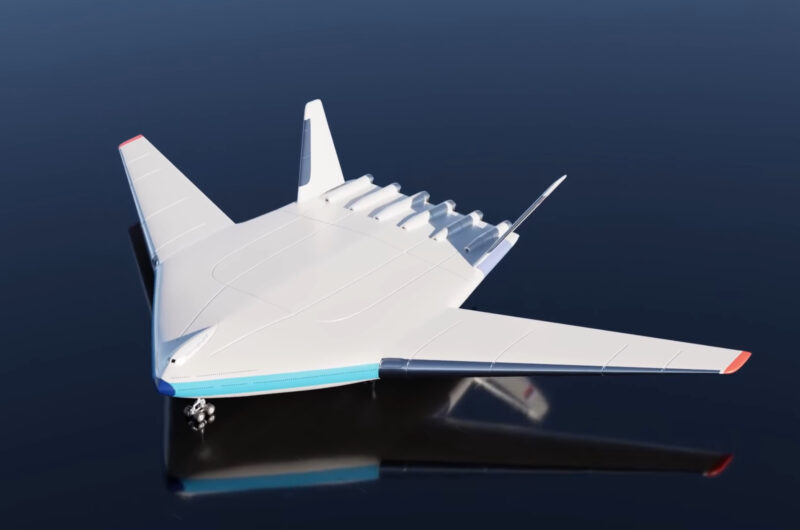
A Cold War Dream
Born in the twilight of the Cold War, the Tu-404 emerged alongside another wide-body design, the Tu-304. The ambitious goal? Both projects aimed to establish Soviet dominance in the wide-body passenger aircraft market. The Tu-404, however, had a far more ambitious goal: transporting over 1,200 passengers, a figure that dwarfed even the Boeing 747.
This massive target necessitated a revolutionary approach, and the Tupolev design team wasn’t afraid to push boundaries.
They explored two distinct configurations for the Tu-404:
- The Double-Decker Dream: This concept resembled a giant, stretched version of the current double-decker airplane like the active Airbus A380.
- The Blended Wing Body Bonanza: Here’s where things get interesting. Tupolev proposed a radical “blended wing body” design. In layman’s terms, picture an aircraft where the fuselage seamlessly merges with the wings, creating a massive, tailless flying wing. This futuristic concept promised superior aerodynamics, potentially leading to lower fuel consumption and increased range.
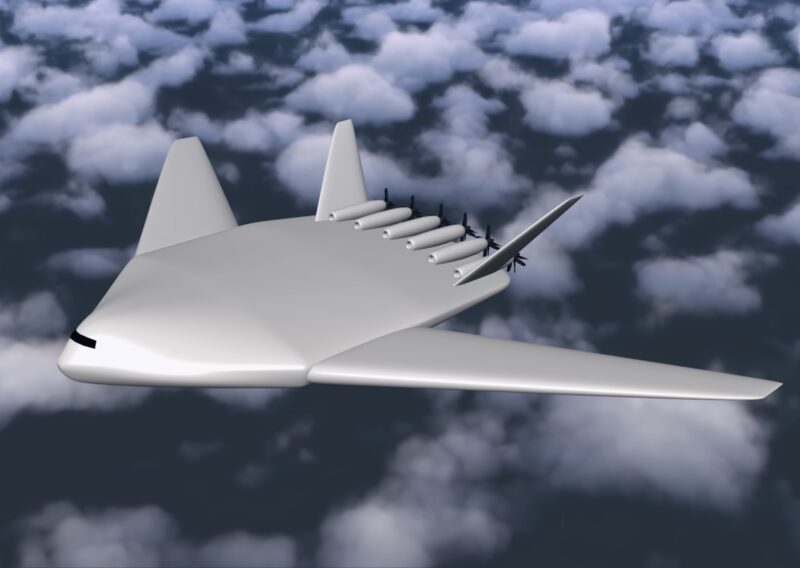
The Double-Decker Design
One proposed configuration for the Tu-404 took a more conventional approach, a massive double-decker passenger aircraft. This design aimed to transport a staggering 1,200 people over long distances, up to 10,000 kilometers (6,200 miles).
The sheer scale of this passenger version necessitated some unique features:
Double-Decker Fuselage: Passengers would have been distributed across two full passenger decks, offering a significant increase in capacity compared to traditional wide-body jets. Even though, we know how it works after the launch of the A380, imagine the logistical challenges of such a massive aircraft at that time.
Multi-Section Cargo Hold: The lower level of the fuselage doubled as a multi-section cargo compartment, capable of holding standard aviation containers. This offered airlines the flexibility to configure the aircraft for either pure passenger transport or a mixed passenger-cargo configuration with an enlarged cargo section. A dedicated cargo model was also envisioned.
Imposing Wings: The low-level wing boasted a leading-edge sweep of 35 degrees and distinctive vertical wingtips. These massive wings housed equally impressive control surfaces, including multi-section leading-edge control surfaces, low-speed control areas, and multi-section flaps. Each half of the altitude control surface was further divided into two sections, further emphasizing the aircraft’s scale.
Engine Power: Four powerful Kuznetsov NK-44 turbofan engines or equivalent Rolls-Royce “Trent” engines were envisioned to propel this aircraft. These engines, mounted on underwing pylons, would have generated a significant amount of thrust to overcome the aircraft’s immense weight.
Reinforced Landing Gear: A robust undercarriage consisting of several carts with multiple wheels in each cart was designed to handle the weight of the Tu-404 during takeoff and landing. This undercarriage retracted into the central fuselage section for a streamlined profile in flight.
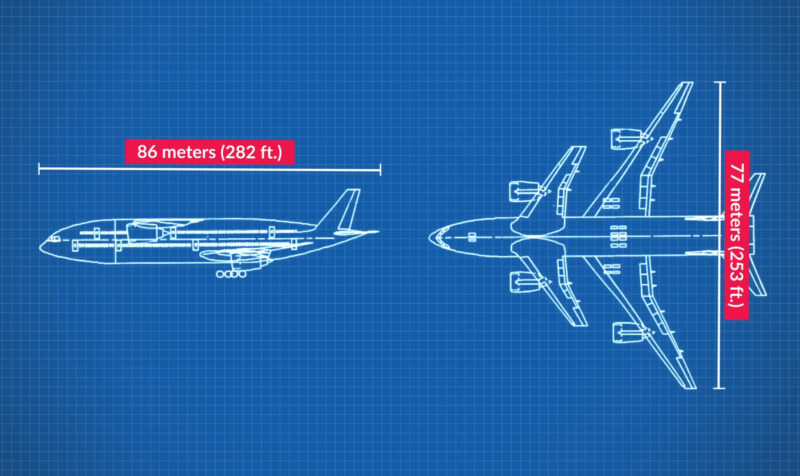
General Specifications (Double-Decker Variant)
Length: 86.6 meters (284 ft)
Wing Span: 77 meters (253 ft)
Overall Height: 27.3 meters (89.6 ft)
Wing Leading Edge Sweep: 35 degrees
Max. Take-off Weight: 605,000 kg (1,333,760 lb)
Max. Payload: 126,000 kg (277,816 lb)
Max. Passenger Capacity: 1,200
Number of Engines: 4
Engine Type: Kuznetsov NK-44 turbofan or equivalent
Thrust on Take-off per Engine: 40,000 kgs (88,185 lb)
Fuel Consumption in Cruise Mode: 0.54 kg/kgf-h
Cruise Altitude: 11,000 metres
Practical Range with Payload: 13,500 Km (normal)/ 9,200 Km (With maximum payload)
Required Runway Type: Class “A”
Take-off Rum: 3,200 meters
The Blended Wing Body Bonanza: A Futuristic Vision
The other proposed configuration for the Tu-404 embraced a far more radical design, a blended wing body (BWB) concept. This futuristic design departed from the traditional fuselage-and-wing layout, with the fuselage seamlessly merging into the wings, creating a massive, tailless flying wing. This approach offered several potential advantages:
Improved Aerodynamics: The BWB design promised superior aerodynamic efficiency compared to the double-decker variant. The smooth, integrated design could have resulted in lower drag and potentially improved fuel consumption.
Unique Passenger Experience: The central fuselage housed six passenger compartments, offering a unique cabin layout compared to traditional airplanes. Imagine the panoramic views passengers might have enjoyed from windows integrated into the curved wing itself.
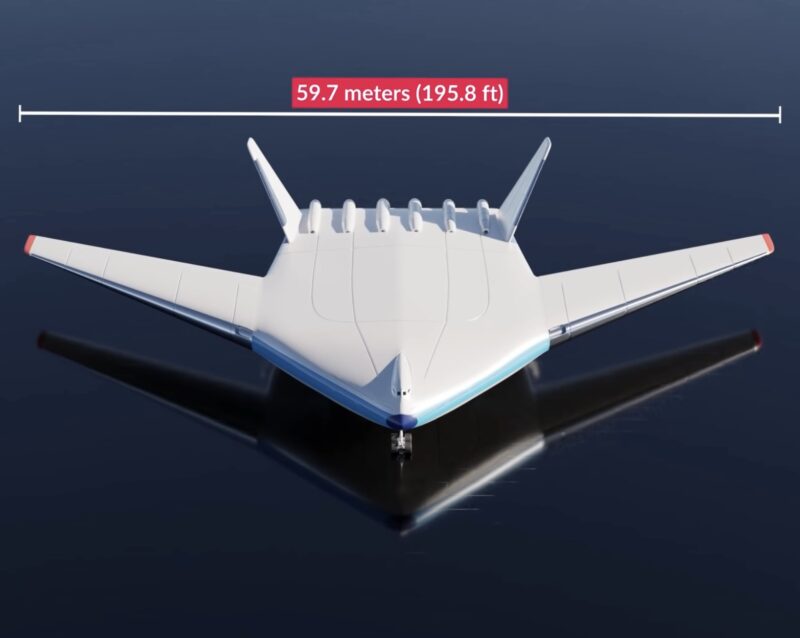
Technical Specifications (Blended Wing Body Variant)
Length: 59.7 meters (196 ft) (Significantly shorter than the double-decker)
Wingspan: 110 meters (361 ft) (A massive increase compared to the double-decker)
Overall Height: 110 meters (361 ft) (A massive height due to the blended wing design)
Wing Leading Edge Sweep: 35 degrees
Max. Passenger Capacity: 1,214 (Similar to the double-decker)
Number of Engines: 6 (Two more engines compared to the double-decker)
Engine Type: Turboprop (A different choice compared to the turbofan engines of the double-decker)
Thrust on Take-off per Engine: 18,000 kg (39,683 lb) (A significant amount of thrust for each engine)
Fuel Consumption in Cruise Mode: 0.644 kg/kgf-h (Potentially more efficient than the double-decker)
Cruise Speed: 900 km/h (M=0.8) (A similar cruising speed to the double-decker)
Cruise Altitude: 11,000 meters (36,089 ft) (Similar cruising altitude to the double-decker)
Practical Range:
- Normal Payload: 13,500 kilometers (8,389 miles) (Similar range to the double-decker)
- Maximum Payload: 9,200 kilometers (5,716 miles) (Similar range to the double-decker)
Required Runway Type: Class “A” (Same requirement as the double-decker)
Take-off Run: 3,200 meters (10,500 ft) (Similar requirement as the double-decker)
The BWB Tu-404 offered a glimpse into the future of aviation, but it also presented significant challenges. The technological hurdles of building such a massive, structurally sound BWB aircraft were significant. Additionally, the noise pollution from six turboprop engines could have been a major concern.
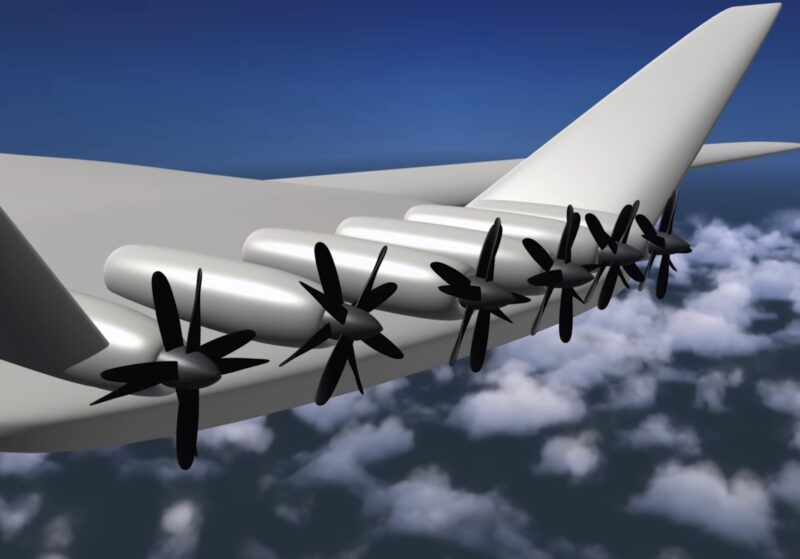
Airlines and Customer Response: A Dream Too Big?
Despite the audacious design and impressive performance targets, the Tu-404 never left the drawing board. The fall of the Soviet Union and the resulting economic turmoil in Russia severely hampered the project.
Additionally, the technological challenges of building such a massive aircraft with the desired efficiency were significant.
The Tu-404’s sheer scale and ambitious performance targets undoubtedly captured the imagination of airlines and aviation enthusiasts alike. However, significant challenges loomed:
- Infrastructure Concerns: Existing airport infrastructure simply wasn’t designed to handle such a behemoth. Imagine the need for reinforced runways, wider taxiways, and specialized boarding gates. Even the introduction of the Airbus A380 necessitated a number of upliftments of the existing facilities.
- Market Uncertainty: Airlines weren’t entirely convinced of the need for an aircraft carrying over 1200 passengers. Filling such a massive plane consistently on specific routes seemed challenging.
- Economic Turmoil: The fall of the Soviet Union in 1991 significantly impacted the entire project’s funding and development.
- The Environmental Impact: A giant aircraft like the Tu-404, even with advanced engines, would have undoubtedly had a significant environmental footprint. The sheer amount of fuel required for operation and the potential for noise pollution resulted as the major drawbacks.
- The Passenger Experience: Imagine being one of 1200+ passengers on a single flight. Boarding times, potential delays, and in-flight amenities would have required significant planning and innovation to ensure a comfortable journey for everyone.
Building such a massive aircraft wouldn’t come cheap. Estimates suggest the development costs could have reached tens of billions of dollars, making it one of the most expensive aircraft projects ever conceived.
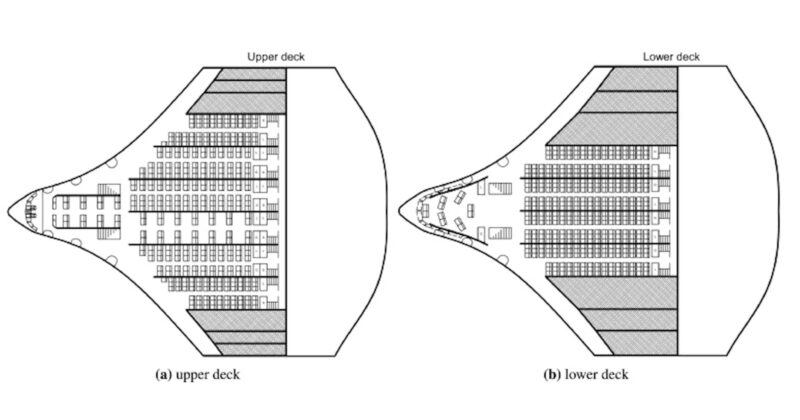
Legacy of a Giant
The Tu-404 may not have graced the skies, but its legacy lives on. The concept served as a testbed for advanced aerodynamic designs and continues to inspire aviation enthusiasts. Some believe elements of the Tu-404 project influenced the development of Russia’s next-generation military transport aircraft.
The Tu-404’s story is a fascinating glimpse into the “what if” of aviation history. It serves as a reminder of the audacity and ambition that can drive innovation, even if the challenges sometimes prove insurmountable.
Sources: Aerotime, Found and Explained, Secret Project Forum (Donald McKelvy), Aero Por Trás da Aviação


